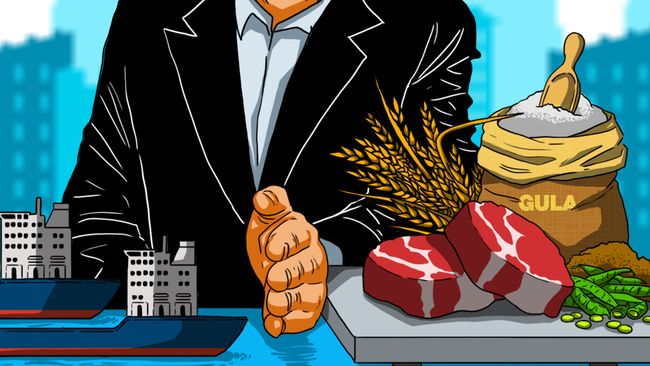Jakarta, CNBC Indonesia – The world is currently in chaos, the economy is overshadowed by a potential recession and the war is still heating up. However, the world also has to deal with the food shortage that has now spread to several developed countries such as Australia, which has become the latest ‘victim’ of the crisis.
Climate change was the main trigger of the food crisis, but was subsequently exacerbated by the Covid-19 pandemic. When the problem is not over, the situation has become even more dramatic with the Russian-Ukrainian war that broke out earlier this year, which made food prices expensive.
In addition, the surge in oil and gas prices also affected fertilizer prices, which in turn also increased the costs of harvesting and production.
ANNOUNCEMENT
Scroll to resume content
United Nations Food and Agriculture Organization (FAO) data launch that the world food price index has increased from 2018 until this year. The rising food price index has also pushed hunger and malnutrition rates to reach over 828 million people worldwide.
|
Number: IMF, FAO
|
On September 12, 2022, the United States Department of Agriculture (USDA) provided its projections on world food supplies ranging from corn, wheat, rice and soy.
These four raw materials are high carbohydrate sources and form the basis of food menus around the world. So that its availability is often the main focus and will certainly affect world food prices in the future.
However, of the four main commodities, only wheat is expected to increase its availability. Meanwhile, corn, wheat and rice are expected to experience a decline in inventories over the period 2022/2023.
Corn
Global corn stocks in 2022/2023 are expected to decrease by 2.2 million tons to 304.5 million tons due to lower production from Ukraine, the European Union and Thailand.
Although corn production from China, Ukraine, Canada and Mozambique increased, it was unable to compensate for the reduction in production.
Grain
The global grain supply in 2022/2023 is expected to increase by 3.6 million tons to 1,059.6 million tons, in line with the increase in production from Russia and Ukraine.
Wheat production from Russia in 2022/2023 is expected to increase to 91 million tons of winter wheat yield. Meanwhile, production from Ukraine is expected to increase by 1 million tons to 20.5 million.
However, increased global supply increased global consumption from 2.4 million tons to 791 million tons.
Even so, global final inventory for the period 2022/2023 is projected to increase by 1.2 million tons to 268.6 million tons.
Rice
The 2022/2023 global outlook for rice supply is expected to be lower due to increased consumption and reduced supplies. Supply is expected to decrease by 4.4 million tons to 692.9 million due to lower production from China, India and Pakistan.
Production in China was reduced by 2 million tons to just 147 million due to drought conditions in southern China. Meanwhile, Indian production has been reduced by 2 million tons to 126.5 million, triggered by a drought in the northeast. The drop in production will be the first reduction in India’s rice production since 2015/2016.
Production in Pakistan decreased by 500,000 tons to 8.4 million due to floods in August 2022 and reduced rice production.
On the other hand, world consumption in 2022/2023 increased by 0.6 million tons to a record 519.3 million tons. The global final inventory projected in 2022/2023 will decrease by 5 million tons to just 173.6 million tons.
Soya beans
Closing global soybean stocks for 2022/2023 are estimated at 98.9 million tons, down 2.5 million tons due to lower U.S. (US) production and low inventory in China.

